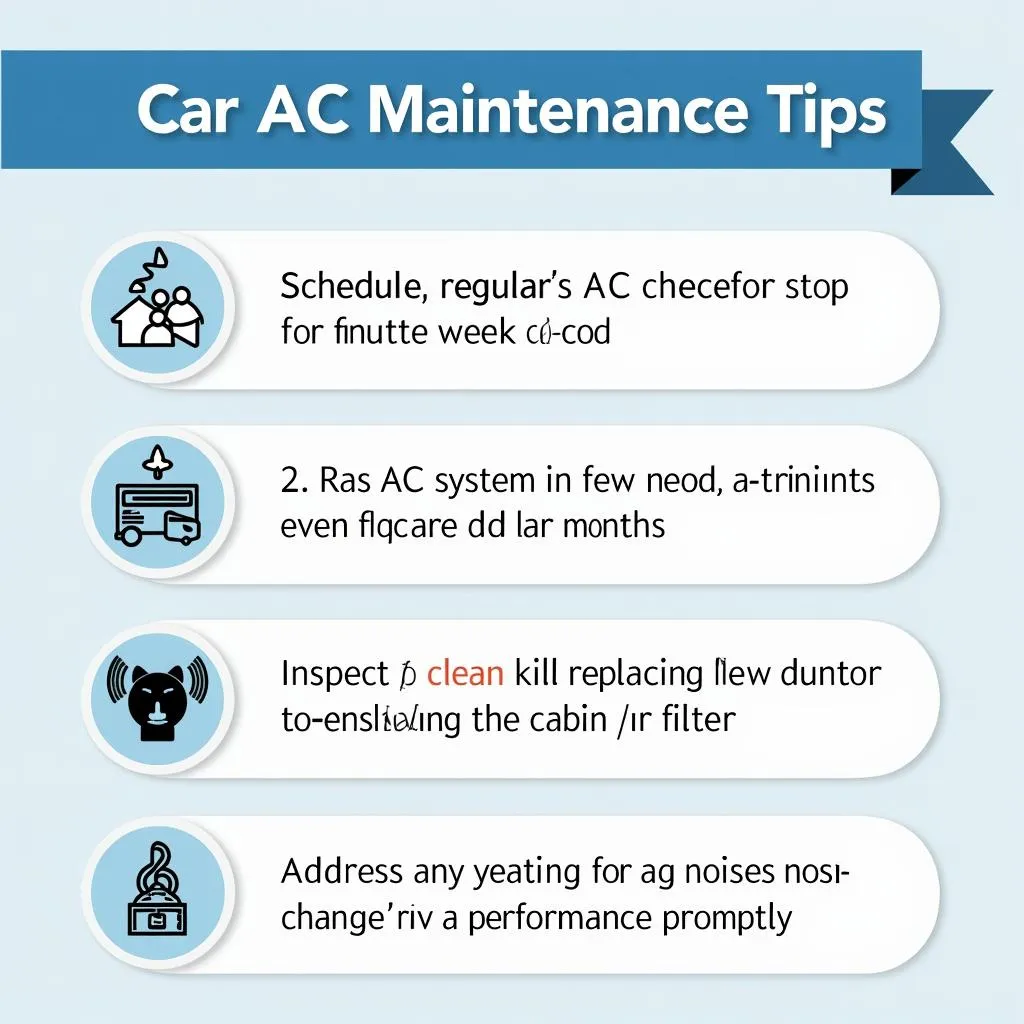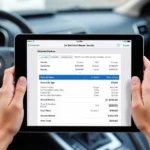Experiencing warm air blowing from your car’s vents instead of the refreshing chill you expect? Don’t sweat it! Air conditioning repair for a car is a common service, and understanding the basics can help you navigate the process smoothly.
Understanding Your Car’s AC System
A car’s air conditioning system is more complex than just a fan blowing over cold coils. It involves a closed loop system with refrigerant, a specialized fluid that cycles through various components to cool the air.
Here’s a simplified breakdown:
- Compressor: This component pressurizes and circulates the refrigerant throughout the system.
- Condenser: Positioned at the front of your car, the condenser cools the hot, pressurized refrigerant gas, turning it into a liquid.
- Evaporator: Located inside the dashboard, the evaporator takes the cooled liquid refrigerant and turns it back into a gas. This process absorbs heat from the air passing through it, resulting in cool air blowing into your car.
- Receiver/Dryer: This component stores excess refrigerant and removes any moisture from the system.
Common Air Conditioning Problems
While a properly maintained car AC system can last for many years, several issues can arise:
- Refrigerant Leaks: One of the most common problems is a refrigerant leak. This can occur due to worn-out seals, damaged hoses, or corrosion.
- Compressor Failure: The compressor is the heart of the system, and its failure can be costly to repair. Signs of a failing compressor include unusual noises, reduced cooling efficiency, and leaks.
- Electrical Issues: Malfunctions in the electrical components, such as blown fuses, faulty wiring, or a malfunctioning control module, can also disrupt the AC system.
- Clogged Cabin Air Filter: A dirty or clogged cabin air filter restricts airflow, leading to reduced cooling and unpleasant odors.
Diagnosing the Problem
When your car’s AC isn’t performing optimally, the first step is proper diagnosis. While some issues, like a clogged cabin air filter, can be visually identified, others require specialized tools and knowledge.
A qualified mechanic will:
- Inspect the system visually: They will check for any obvious signs of damage, leaks, or loose connections.
- Use an AC gauge set: This tool measures the pressure levels in the system, indicating if there’s enough refrigerant and if the compressor is functioning correctly.
- Perform electronic diagnostics: Modern cars have sophisticated electronic control modules that manage the AC system. A mechanic can use a scan tool to read error codes and identify electrical faults.
Air Conditioning Repair Costs
The cost of air conditioning repair for a car can vary greatly depending on the problem’s nature and severity.
Here’s a general idea:
- Refrigerant Recharge: A simple recharge can cost between $100 to $300.
- Component Replacement: Replacing parts like the condenser, evaporator, or receiver/dryer can range from $500 to $1,500 or more, depending on the make and model of your car.
- Compressor Replacement: This is often the most expensive repair, potentially costing between $1,000 to $2,500 or higher.
Preventing AC Issues
 Car AC Maintenance Checklist
Car AC Maintenance Checklist
Prevention is key to avoiding costly air conditioning repairs. Here are some proactive measures:
- Schedule regular AC checks: It’s a good idea to have your car’s AC system inspected annually, preferably in the spring before the hot weather arrives.
- Run your AC periodically: Running your AC for a few minutes each week, even during the colder months, helps keep the seals lubricated and prevents refrigerant leaks.
- Replace your cabin air filter: Consult your owner’s manual for the recommended replacement interval, typically every 12,000 to 15,000 miles or annually.
- Address issues promptly: Don’t ignore strange noises, reduced cooling performance, or any other signs of trouble. Early detection and repair can prevent more serious problems down the line.
Conclusion
A properly functioning AC system is essential for comfortable driving, especially during hot weather. Understanding the basics of your car’s AC system, recognizing common problems, and practicing preventative maintenance can help you stay cool on the road and avoid unexpected breakdowns. Remember, regular maintenance is always less expensive than major repairs.


